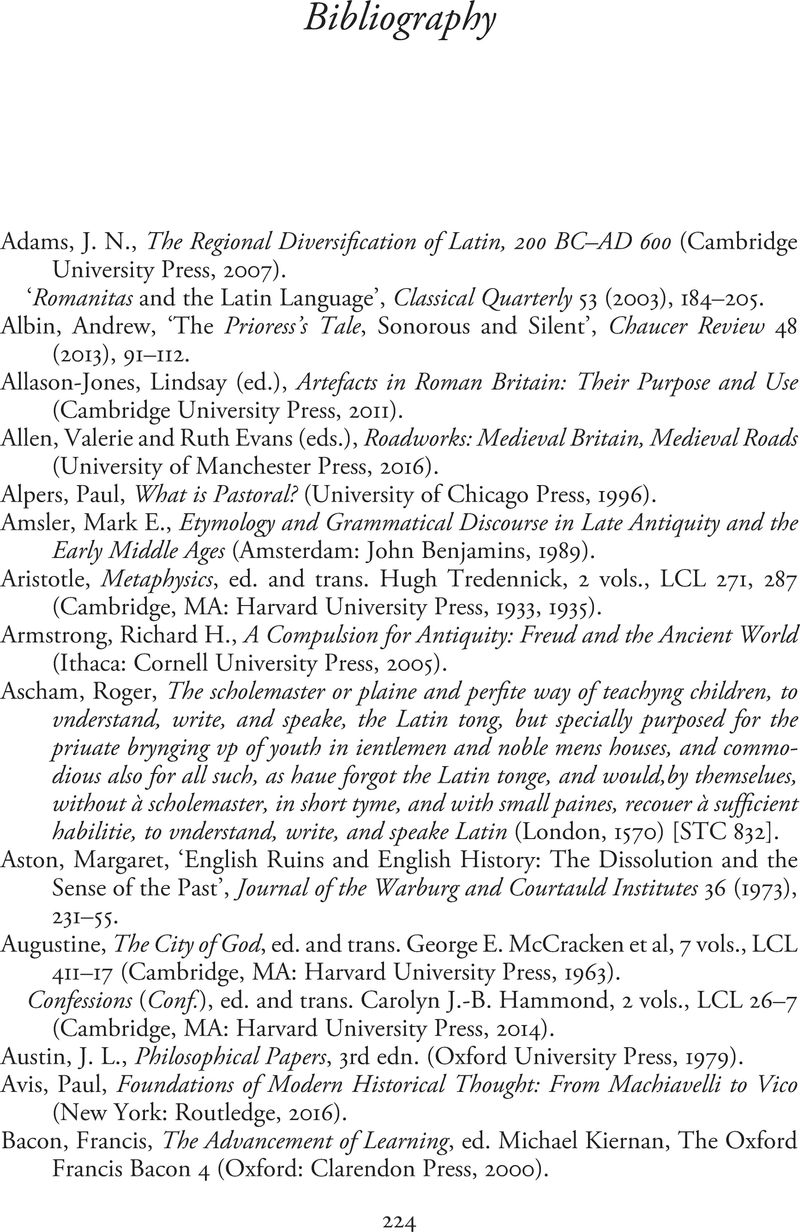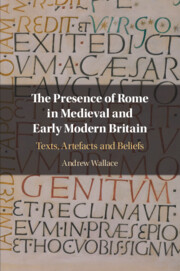Book contents
- The Presence of Rome in Medieval and Early Modern Britain
- The Presence of Rome in Medieval and Early Modern Britain
- Copyright page
- Dedication
- Contents
- Figures
- Preface
- Acknowledgements
- Note on Texts and Translations
- Abbreviations
- Introduction
- Chapter 1 The Ordinary
- Chapter 2 The Self
- Chapter 3 The Word
- Chapter 4 The Dead
- Conclusion
- Bibliography
- Index
- References
Bibliography
Published online by Cambridge University Press: 18 September 2020
- The Presence of Rome in Medieval and Early Modern Britain
- The Presence of Rome in Medieval and Early Modern Britain
- Copyright page
- Dedication
- Contents
- Figures
- Preface
- Acknowledgements
- Note on Texts and Translations
- Abbreviations
- Introduction
- Chapter 1 The Ordinary
- Chapter 2 The Self
- Chapter 3 The Word
- Chapter 4 The Dead
- Conclusion
- Bibliography
- Index
- References
Summary

- Type
- Chapter
- Information
- The Presence of Rome in Medieval and Early Modern BritainTexts, Artefacts and Beliefs, pp. 224 - 246Publisher: Cambridge University PressPrint publication year: 2020



